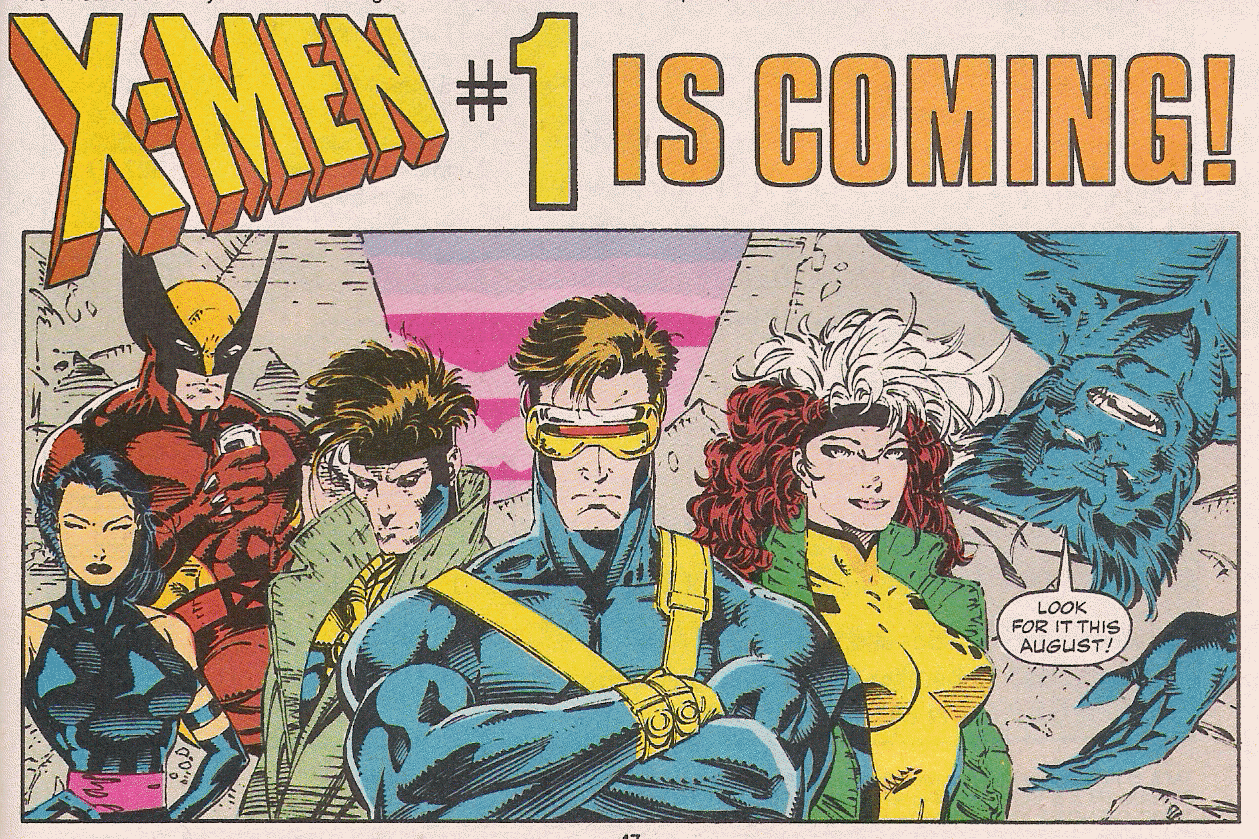
Lots of hype.

Marvel re-launches its most popular book.

Chris Claremont ends his run on X-Men by beginning a new X-Men book (co-plotted with artist Jim Lee), and there’s a lot of familiar Claremontian elements: A huge cast, multiple points of view, and lots and lots of verbiage.

Claremont loves to write speeches.
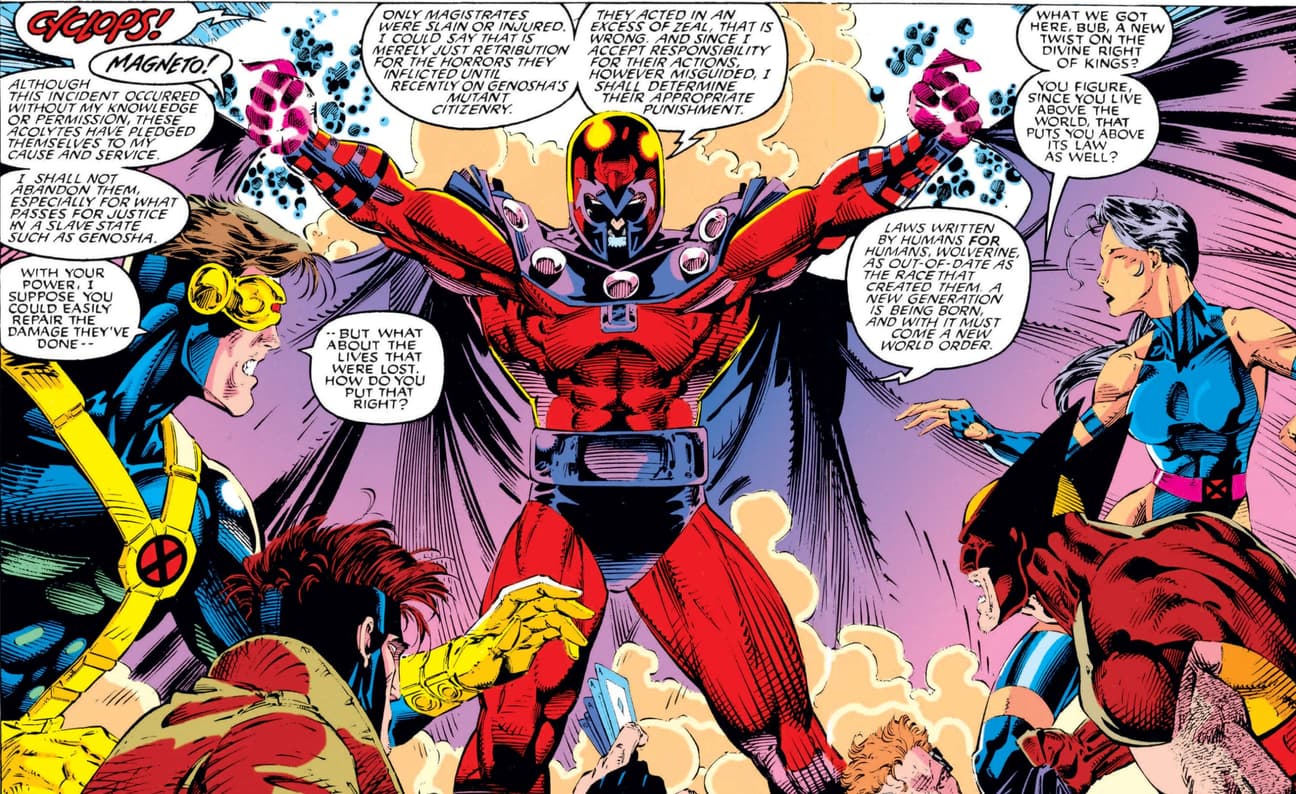
It’s a very, very “big” story.
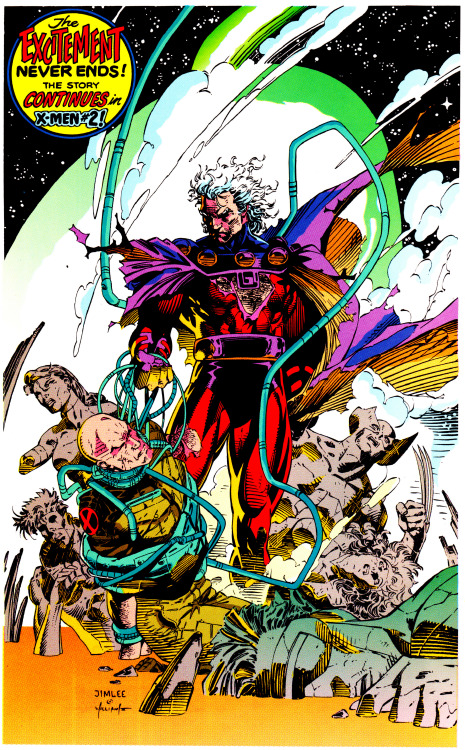
Seriously, though, Claremont was the perfect writer to essentially recreate and expand a 5-person team into an entire universe. In many ways, Marvel owes its fortune to him—or a great deal of it, anyway.
So, of course, he’s never gotten his due.
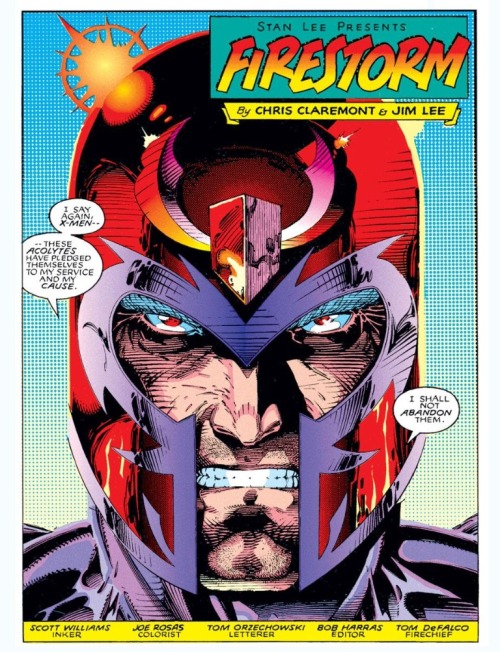
Anyhow, this book has the new X-Men struggling to find their way, torn between the vision of Professor X and Cyclops that drove the team for 30 years, Magneto’s more violent view of the future (confirmed by Rachel Summers, daughter of Cyclops), and a new, third way—which will be led by Storm and Cable (son of Cyclops).
There’s lots of moralizing, speechifying, and hand wringing as we see the members moving through their own decision processes, but the big story beats are: Magneto recreates Asteroid M. Some Russian mutants go to him, thinking he’s still intent on world domination, but he responds that he’s moved into space to be isolated—not to strike back. He hijacks some nukes (for deterrence), and Fury and the USSR team up to respond.
Meanwhile, Professor X is wondering if his vision of mutants and humans holding hands is sustainable in the 1990s, when everyone is on steroids and looking jacked as hell. And after a group training exercise, Wolverine and Cyclops bicker.

Because they always do.

Magneto uses his powers to blow up the world’s electronic systems (via a giant magnetic EMP), the X-Men go fight him, and we meet a new mutant who is living with Magneto on Asteroid M.
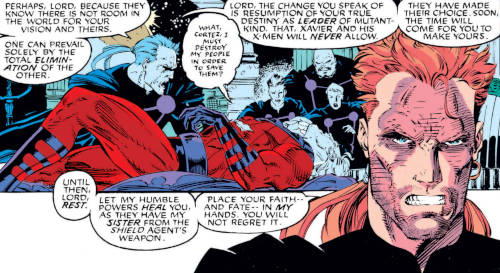
Fabian Cortez. He has the power to “boost” biological responses, which means he can heal people, make them more powerful, etc. Neat idea.
And because that’s not enough plot, Magneto’s new followers—a group of mutants bent on withdrawal from Earth—attack Genosha. They’re called the Acolytes. Fabian is one of them, but later is revealed as a double-agent of sorts. All of the Acolytes die at the end of this arc, so I’m not tagging them.
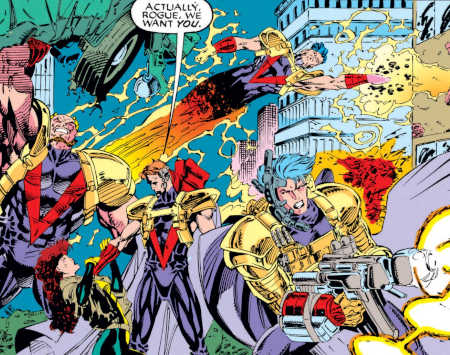
I admit I didn’t really understand why they attacked Genosha, but it allows for more action and more posing. And a fastball special.

This battle really doesn’t matter, except that it showcases even more mutants. Because the X-Universe is a constantly expanding one.
Later, Magneto confronts Moira MacTaggert about something that happened when he was reverted to a baby a long, long time ago—when the X-Men and Defenders teamed up.

Yeah, that long ago.
We learn that Moira, who was baby Magneto’s minder, changed his genetic structure in the hope of finding a cure for her own child’s mutancy and when she did, she decreased his power level. She also found that Magneto’s super-power-level made him a little crazy. Therefore, when he grew to an adult again, his changed molecular structure essentially “domesticated” him, explaining the time period where he served as a peacemaker/leader of the New Mutants/etc.
Fabian Cortez “heals” this genetic anomaly, returning Magneto to his “I wanna be God” mentality. It also turns out that Magneto is dying, and Fabian couldn’t stop that, so Magneto kills himself.
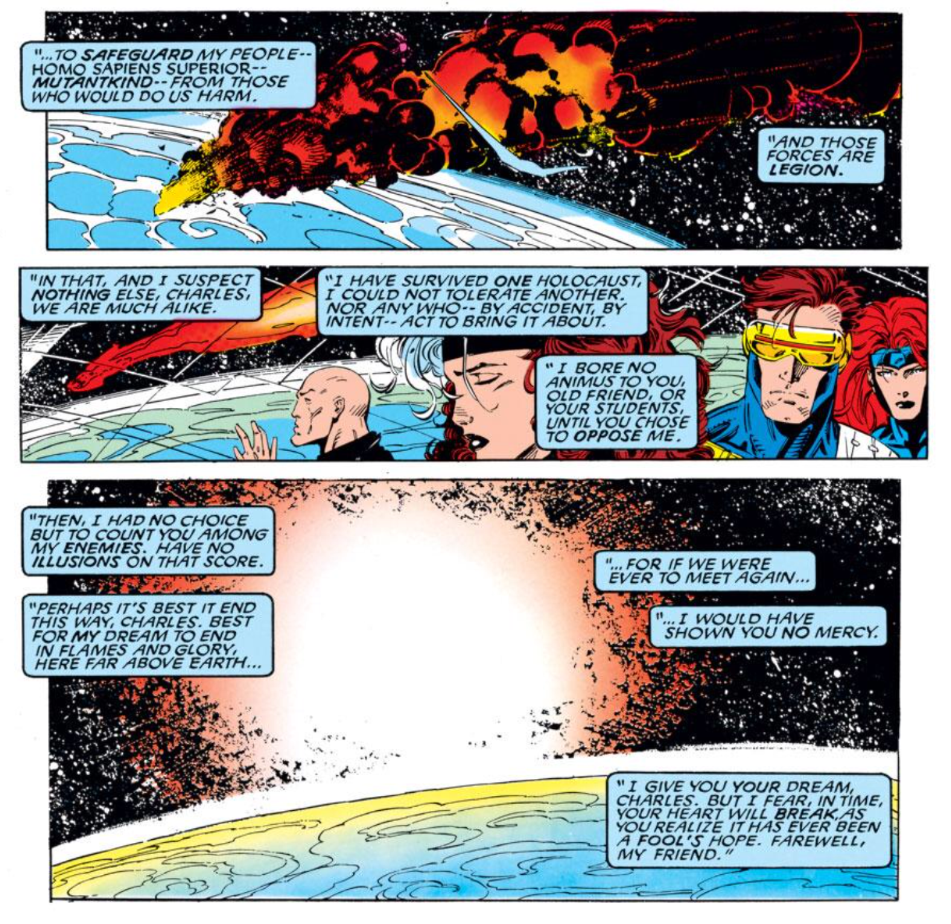
Which makes some of what just happened irrelevant. But, wow. What a way to end your time with the X-Men: By killing their first and biggest foe.
It would have been terrifically impactful if Marvel had allowed Magneto to stay dead, since Chris Claremont was really the guy who built Magneto into a huge global-and-philosophical threat. But of course they didn’t. And on top of it, this story kind of undoes everything Claremont did in terms of character development by saying Magneto’s genes were altered—he didn’t really grow as a person. I suspect that this was partly due to Jim Lee’s influence—Lee was a powerful force at Marvel in the early 1990’s, and he was a co-plotter here.
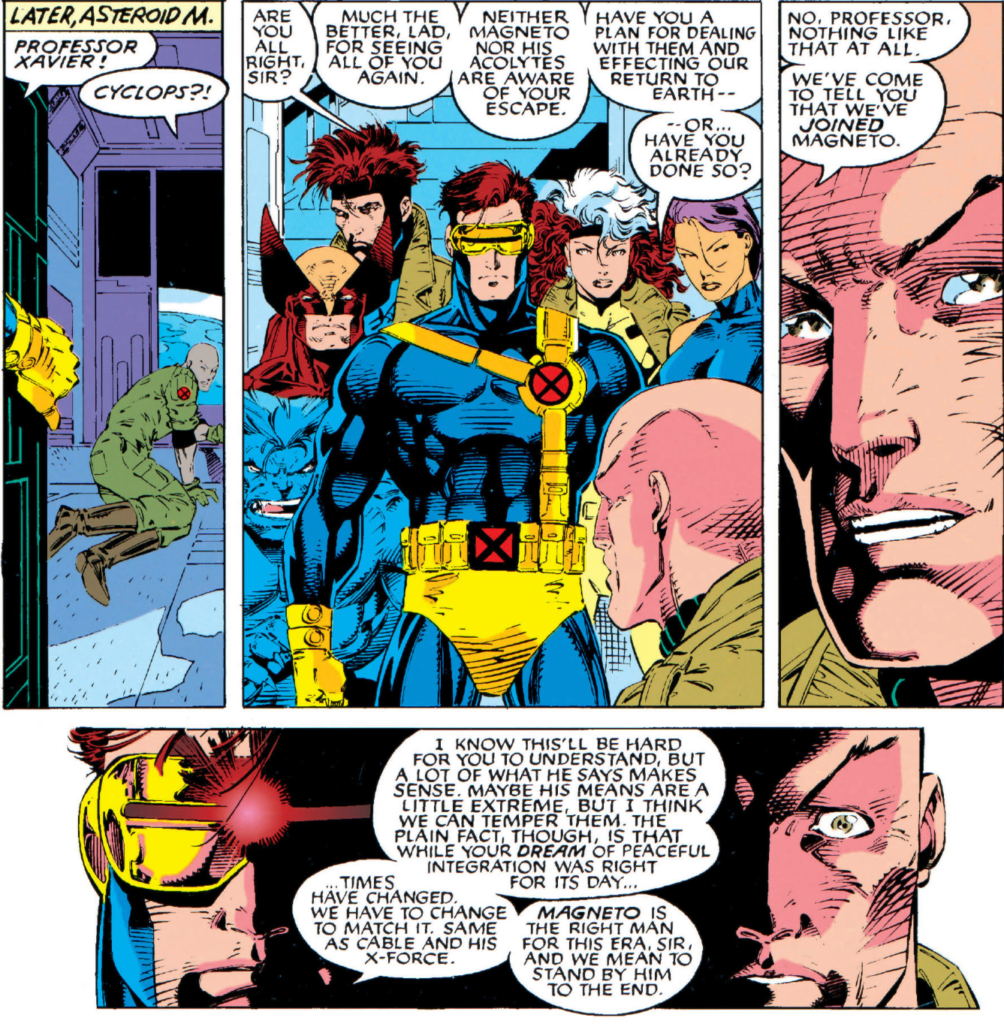
By the end of the story, Scott goes with the Magneto theory, leading a team called the Gold Team, while Storm stays with Professor X to lead a Blue Team. The division is Solomon-like, with Scott recognizing that the need for increased violence and urgency can coexist with a more peaceful vision for the future.
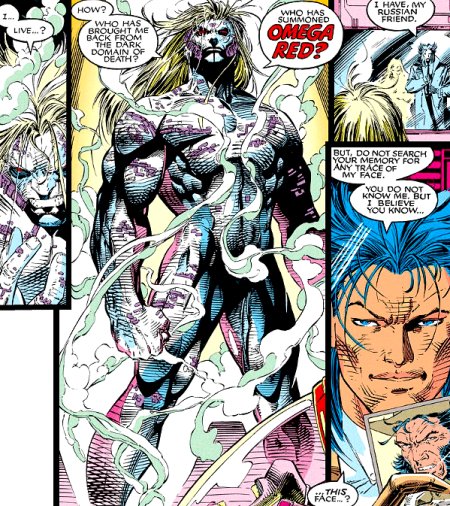
There’s also a seeding of a future plot about Omega Red, who first appears here.
